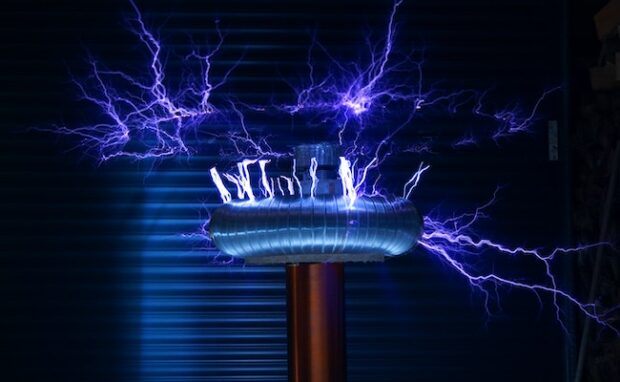Scientists turn humid air into a renewable energy source
Researchers from the University of Massachusetts accidentally created a way to turn surrounding humid air into electricity. Their study’s lead author, Professor Jun Yao, said he and his team only wanted to create an air humidity sensor. However, they may have stumbled upon a new form of alternative energy!
Believe it or not, many of our beloved everyday items were accidental discoveries. For example, Dr. Spencer Silver invented Post-it Notes when he failed to create a strong adhesive. Turning thin air into a renewable energy source seems like wishful thinking, but it could be another green revolution.
Prof Jun Yao’s discovery may soon power our homes, so you should learn how it works. This article will elaborate on his latest study and share opinions from other experts regarding his discovery.
How do you convert humid air into renewable energy?
Their device "is the size of a thumbnail, one-fifth the width of a human hair, and capable of generating roughly one microwatt …in principle, we can stack multiple layers in vertical space to increase the power.”https://t.co/BAxIjQWqRw
— Maurice J. White (@WhiteMaurice) July 3, 2023
The Guardian reported about this amazing breakthrough on July 2, 2023. The news outlet said Yao’s team published a paper declaring they successfully generated a small yet continuous electric current from air humidity.
As mentioned earlier, the scientists were not aiming to create renewable energy. “To be frank, it was an accident. We were actually interested in making a simple sensor for humidity in the air.”
They made it with an array of microscopic tubes or nanowires. Each was less than one-thousandth the diameter of a human hair, wide enough for airborne water molecules to pass through.
“But for whatever reason, the student who was working on that forgot to plug in the power,” the professor added. The UMass Amherst team felt surprised when they saw water molecules generating electricity.
They bumped inside the tube, producing a small charge. Moreover, both ends of the tube gained positive and negative charges as the molecules bumped further. “So it’s really like a battery,” says Yao.
You may also like: NASA achieves 98% water recovery in space
“You have a positive pull and a negative pull, and when you connect them, the charge is going to flow.” Yet, The Guardian says Yao’s team tried a different approach in its latest study. Professor Jun Yao and the other researchers replaced the nanowires with nanopores, materials with millions of tiny holes.
Their device is as small as a thumbnail and one-fifth the width of a human hair. More importantly, each can produce roughly one microwatt, enough to light a pixel on a large LED screen.
Could it provide renewable energy to our homes in the future? Yao explained, “The beauty is that the air is everywhere…. in principle, we can stack multiple layers in vertical space to increase the power.”
What do other researchers say about this study?
Other scientists doubted the study’s practical applications. For example, Anna Korre, environmental engineering professor at Imperial College London, asked, “How do these devices get manufactured?”
“Sourcing raw materials, costing assessing the environmental footprint, and scaling them up for implementation takes time and conviction,” Korre noted. Also, Colin Price, a geophysics professor at Tel Aviv University, said, “All new technologies for energy need to think of the ‘green premium.’”
You may also like: New battery technologies for electric cars
The latter refers to the additional cost of choosing clean technology over another that emits more greenhouse gases. “The green premiums are huge at the moment for this technology,” Price noted.
“Hopefully, [it] would be reduced by R&D, investments, tax breaks for clean energies, and levies on dirty energies,” he added. On the other hand, Peter Dobson, emeritus professor of engineering science at Oxford University, says he’s optimistic about the study.
“When I first heard about it, I thought: ‘Oh yes, another one of those.’ But no, it’s got legs, this one has,” says Dobson. “If you can engineer and scale it and avoid the thing getting contaminated by atmospheric microbes, it should work.”
Conclusion
Scientists from the University of Massachusetts accidentally found a way to turn humid air into a renewable energy source. At the time of writing, Professor Jun Yao and his team are still developing their project further.
The scientists admit they would need years to optimize and mass-produce a prototype. Nevertheless, they believe air-derived electricity or “hygroelectricity” may power homes 24/7 without additional infrastructure.
If you want to learn more about the UMass Amherst team’s study, head to the Wiley Online Library. Also, follow Inquirer Tech for more digital tips and trends.
